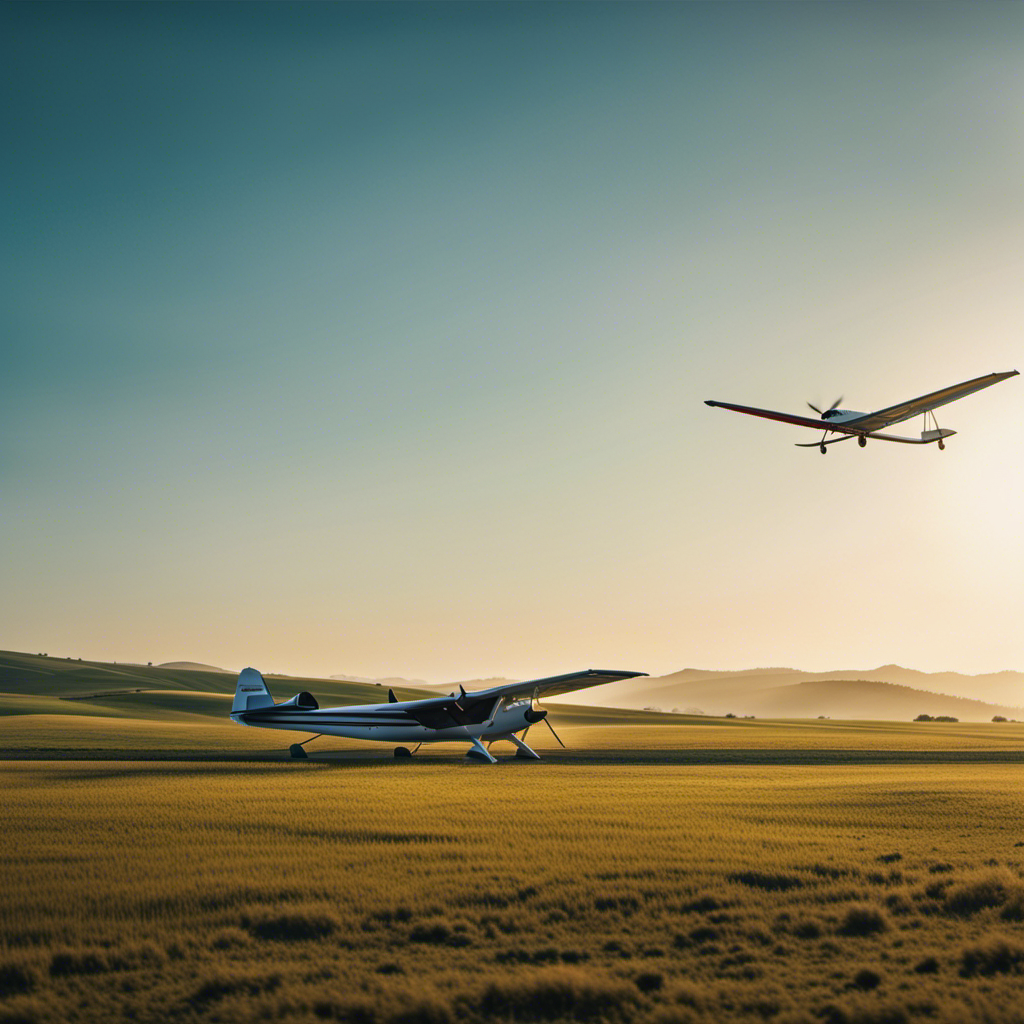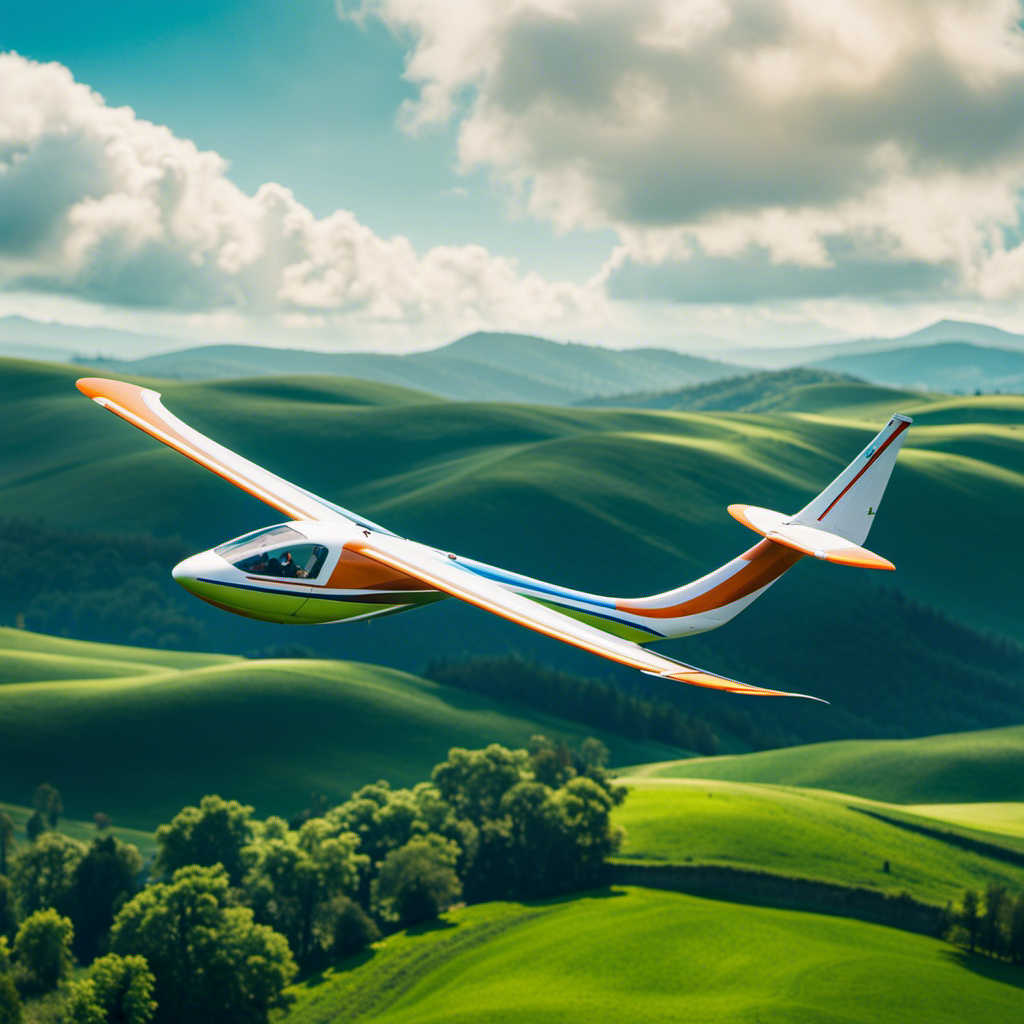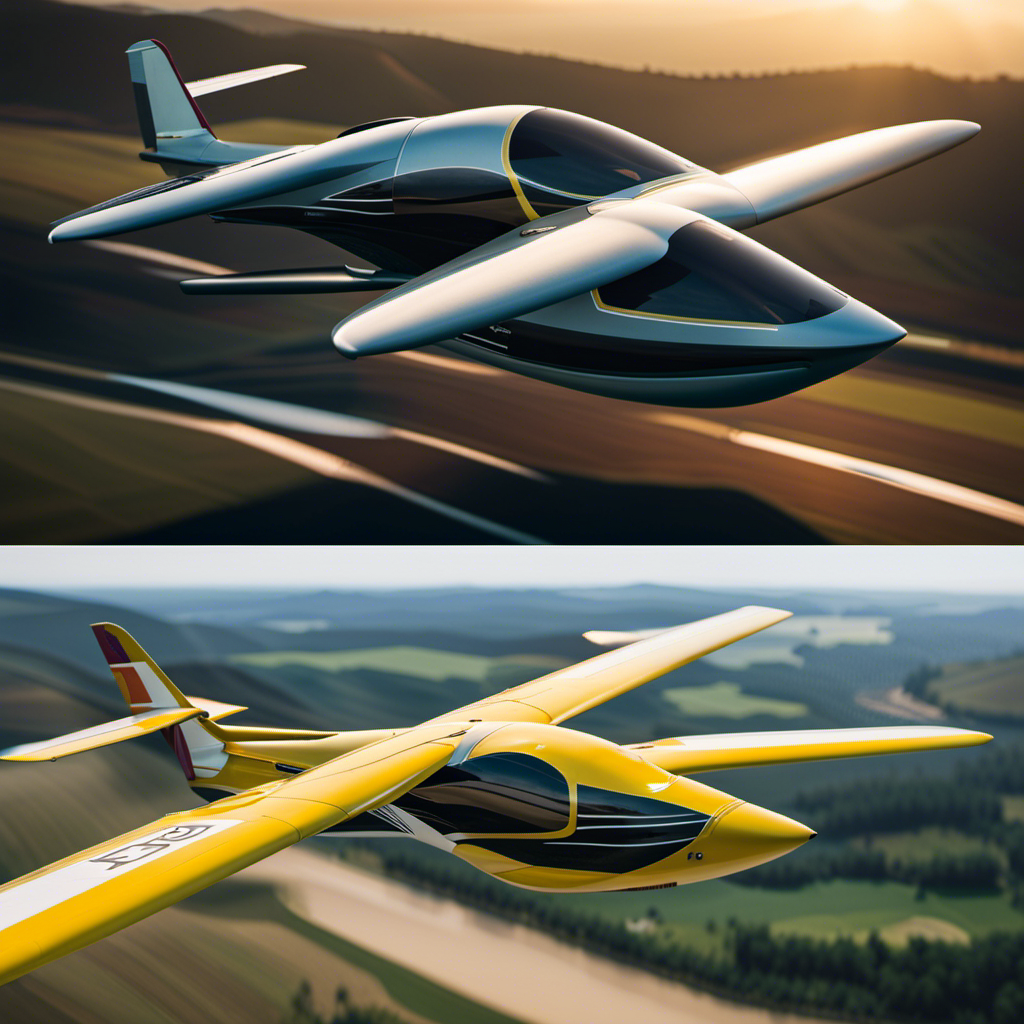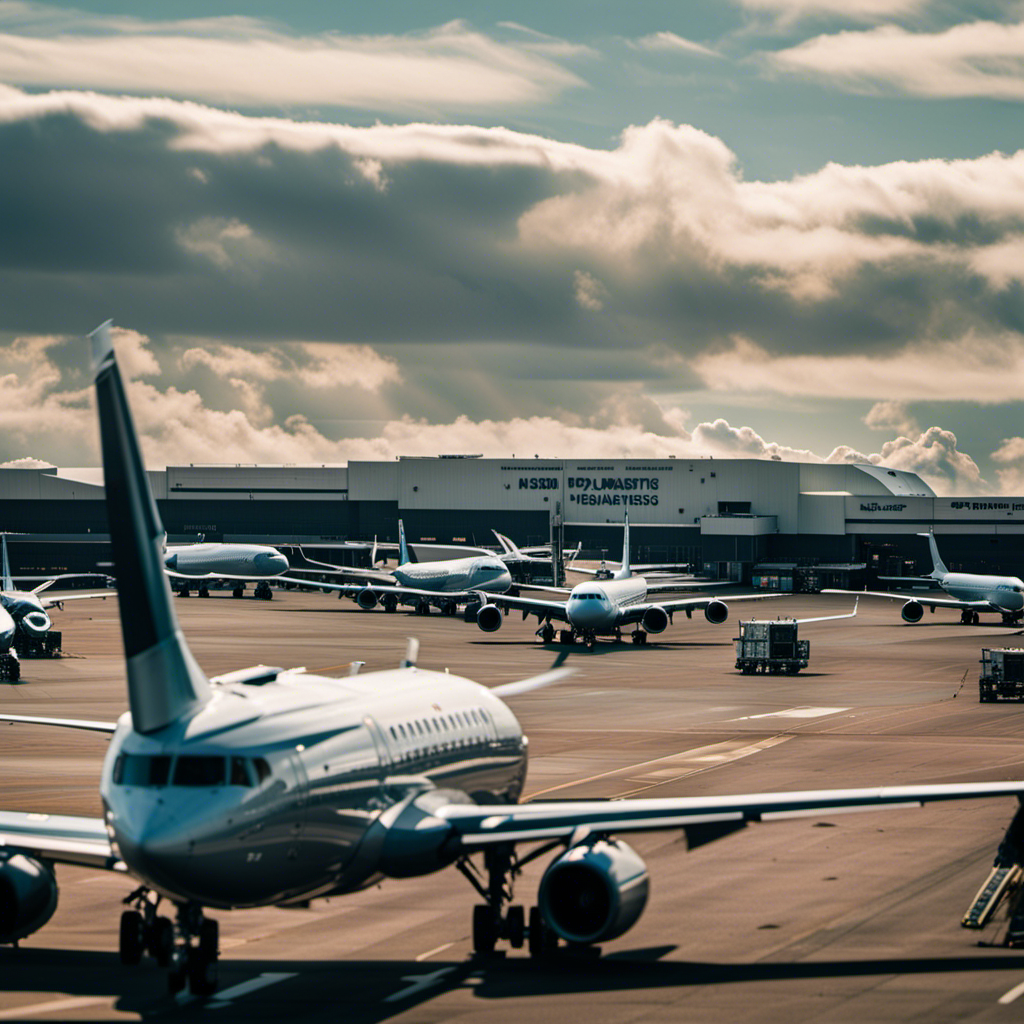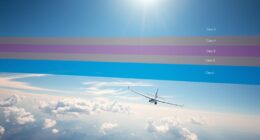As an expert gliding instructor, it is a privilege for me to share the art of navigating the wind and guiding aspiring pilots towards a sense of freedom and thrill.
In this article, I will share the fundamentals of gliding, the art of soaring, and the advanced techniques that elevate pilots to new heights.
Safety measures and pre-flight checks will be explored, along with the role of technology in this awe-inspiring sport.
Join me as we delve into the world of gliding, uncovering the joy and liberation of soaring through the skies.
Key Takeaways
- The advancements in technology in gliding have greatly enhanced safety and the flying experience, with state-of-the-art instruments, GPS technology, real-time weather data, and improved communication systems.
- Participating in gliding competitions and events offers the opportunity to showcase skills, test abilities, learn from experienced gliders, and promote the sport of gliding.
- Gliding provides the joy and freedom of soaring through the skies, with a sense of serenity, unparalleled views, and a unique perspective from above.
- Gliding allows for appreciation of the beauty of the sky and nature, with breathtaking vistas, a connection to the natural world, and an experience of the power and harmony of the elements.
The Fundamentals of Gliding
Now let’s dive into the fundamentals of gliding and how you can become a skilled glider pilot.
Gliding is a thrilling sport that relies on harnessing the power of the wind to soar through the skies. To start, you’ll need to understand the principles of flight and the aerodynamics of gliders.
It’s crucial to learn how to control the aircraft using the ailerons, elevator, and rudder. Mastering the art of takeoff and landing is essential, as well as maintaining proper speed and altitude during flight.
Additionally, you’ll need to develop a keen sense of weather patterns and air currents to make the most of each flight.
Mastering the Art of Soaring
To truly excel in the art of soaring, you must focus on perfecting your technique and embracing the subtle movements of the air currents. Here are four key elements to mastering the art of soaring:
-
Aerodynamic finesse: Feel the gentle caress of the wind as it flows over the wings, forming laminar airflow and reducing drag. Adjust your control surfaces with precision to maintain optimal lift and minimize the effects of turbulence.
-
Thermal hunting: Learn to detect the invisible columns of rising air and exploit them to gain altitude. Ride the thermals like an expert, circling within their invisible boundaries, constantly adjusting your bank angle and rate of turn to stay within the core.
-
Ridge soaring: Harness the power of the wind as it encounters an obstacle, such as a mountain or a ridge. Fly close to the terrain, skillfully using the updrafts generated by the wind hitting the obstacle to maintain altitude and extend your flight time.
-
Wave riding: Ascend to higher altitudes and discover the mesmerizing world of mountain waves. Ride the invisible waves of air that form on the leeward side of mountains, soaring to dizzying heights with the help of these powerful updrafts.
Safety Measures and Pre-flight Checks
Ensure your safety and the success of your gliding experience by diligently following the necessary safety measures and conducting thorough pre-flight checks.
Gliding is an exhilarating sport that requires careful preparation and attention to detail. Before getting into the cockpit, it is crucial to inspect the aircraft for any signs of damage or malfunction. Check the control surfaces, the cables, and the overall structure. Ensure that all instruments are in working order and the emergency equipment is readily accessible.
Once in the air, always be aware of your surroundings and be prepared to respond to changing conditions. Remember to maintain a safe distance from other gliders and avoid crowded airspace.
By adhering to these safety measures, you can enjoy a smooth and worry-free gliding experience.
Now, let’s delve into advanced gliding techniques to take your skills to new heights.
Advanced Gliding Techniques
Once you’ve mastered the basics, it’s time to explore advanced gliding techniques and elevate your skills to new heights. Here are some techniques that will take your gliding to the next level:
-
Dynamic Soaring: Harness the power of the wind by flying in a circular motion, gaining energy from the wind gradient.
-
Ridge Soaring: Use the updrafts created by the wind hitting a ridge to gain altitude and extend your flight time.
-
Thermaling: Search for thermals, columns of warm air that rise from the ground, and use them to climb higher.
-
Cross-Country Flying: Plan and execute long-distance flights, navigating using landmarks and weather patterns.
These techniques require precision and understanding of the wind’s behavior. By mastering them, you’ll become a skilled glider pilot, capable of soaring through the skies with grace and confidence.
Now, let’s delve into stories from my career as an instructor, where I’ve witnessed firsthand the power of these techniques in action.
Learning from Experience: Stories from the Instructor’s Career
Imagine being a student pilot, eager to learn from the experiences and stories of a seasoned glider instructor. The wealth of knowledge and insights they can offer is invaluable.
As a student, I have had the privilege of hearing countless stories from my instructor’s career. From navigating challenging weather conditions to executing flawless landings, each story serves as a lesson in itself.
These stories not only provide inspiration but also help me understand the practical application of the techniques and skills I am learning. Learning from my instructor’s experiences allows me to gain a deeper understanding of the intricacies of gliding and prepares me for the challenges that lie ahead.
Now, let’s move on to the next section: choosing the right glider and equipment.
Choosing the Right Glider and Equipment
When you’re selecting the right glider and equipment, it’s important to consider factors like your skill level, flying goals, and budget.
As a glider pilot, finding the perfect match between you and your equipment is crucial for a safe and enjoyable flying experience. Your skill level will determine the type of glider you should choose, whether it’s a beginner-friendly trainer or a high-performance competition glider.
Your flying goals, such as leisurely soaring or cross-country racing, will also influence your decision. And of course, your budget will play a significant role in determining the range of options available to you.
In order to ensure a successful gliding journey, it’s essential to carefully consider these factors before making a purchase. Once you have chosen the right glider, the next step is preparation and training for glider pilots.
Preparation and Training for Glider Pilots
Having chosen the right glider and equipment, it is now crucial to focus on preparation and training in order to become a skilled glider pilot. As an instructor, I emphasize the importance of understanding the principles of aerodynamics, meteorology, and navigation. This knowledge enables pilots to make informed decisions and handle various situations effectively while in flight.
Additionally, physical fitness plays a significant role in gliding. Endurance, flexibility, and core strength are essential for maintaining control and maneuvering the glider smoothly.
To ensure comprehensive training, I have developed a structured program that covers theoretical lessons, practical exercises, and simulated flights. This approach allows pilots to gradually build their skills and confidence before venturing into actual gliding missions.
Mastering these fundamentals is crucial to ensure a safe and successful gliding experience.
Transitioning to the subsequent section about ‘the role of technology in gliding’, it is worth exploring how advancements in technology have revolutionized the sport.
The Role of Technology in Gliding
As a glider pilot, you can rely on the advancements in technology to enhance your flying experience and increase safety. Today, gliders are equipped with state-of-the-art instruments and systems that provide valuable information during flight. The cockpit is filled with electronic displays that show altitude, airspeed, and wind direction.
GPS technology allows for precise navigation and helps in planning routes. One of the most important advancements is the inclusion of weather data in real-time. This allows pilots to make informed decisions about when and where to fly, avoiding adverse conditions.
Additionally, modern gliders are equipped with emergency locator transmitters and improved communication systems, further enhancing safety. With these technological advancements, glider pilots can confidently soar through the skies, knowing that they have the tools to navigate and stay safe.
Transition: Harnessing the power of technology in gliding opens up a world of possibilities, including exploring gliding competitions and events.
Exploring Gliding Competitions and Events
To fully immerse yourself in the world of gliding, you can participate in gliding competitions and events. Here, you’ll have the opportunity to showcase your skills and compete with other pilots.
These competitions are not only thrilling but also provide a platform for pilots to test their abilities and push the boundaries of their flying capabilities. From local club competitions to national and international events, there is a wide range of options available for glider pilots to challenge themselves.
These competitions often include tasks such as cross-country racing, duration flights, and precision landings. Participating in these events not only allows you to gauge your progress as a pilot but also provides valuable opportunities to learn from experienced gliders.
Soaring through the skies, feeling the wind beneath your wings, and experiencing the joy and freedom of gliding is a truly remarkable sensation.
The Joy and Freedom of Soaring through the Skies
After exploring the exhilarating world of gliding competitions and events, I now want to share the sheer joy and freedom of soaring through the skies. As a glider pilot, there is nothing quite like the sensation of effortlessly riding on invisible currents of air, with only the sound of the wind to keep you company. It’s a feeling of liberation unlike any other, where you become one with the elements and experience true tranquility.
Here are three aspects that make soaring such a remarkable experience:
-
Pure Serenity: As you detach from the ground and ascend into the vast expanse of the sky, all worries and stresses fade away. The silence and stillness envelop you, allowing you to find peace within yourself.
-
Unparalleled Views: From up above, the world takes on a whole new perspective. You’ll witness breathtaking vistas, from rolling landscapes to majestic mountain ranges, all from a unique vantage point.
-
Mastering Nature: Soaring is a delicate dance with the elements. Skillfully maneuvering your glider to harness the power of thermals and wind currents gives you a sense of mastery over nature, pushing the boundaries of what’s possible.
Frequently Asked Questions
What are the average costs associated with learning to glide?
The average costs of learning to glide include fees for instruction, aircraft rental, and membership in a gliding club. Additional expenses include purchasing equipment like a parachute, flight computer, and radio.
How long does it typically take to become a proficient glider pilot?
Becoming a proficient glider pilot typically takes around 50-100 flights, depending on individual progress and weather conditions. Consistent practice, dedication, and guidance from experienced instructors are key to mastering the skills required.
What are some common challenges that glider pilots face during their training?
During glider training, pilots often face challenges such as mastering the art of coordinated flight, understanding and utilizing thermals, and perfecting landings. These skills can take time to develop, but with practice and guidance, pilots can overcome them.
Are there any physical requirements or limitations for becoming a glider pilot?
There are no specific physical requirements for becoming a glider pilot. However, certain physical attributes like good eyesight, coordination, and being in overall good health are beneficial for safety and performance in the cockpit.
Can you provide any tips or advice for overcoming fear or anxiety when first learning to glide?
When first learning to glide, it’s common to feel fear or anxiety. One interesting statistic is that 95% of new glider pilots experience initial fear, but with proper training and support, they can overcome it and become confident flyers.
Conclusion
As I watched the gliders gracefully dance through the skies, I couldn’t help but be in awe of the sheer beauty and freedom of this sport.
Learning from a top glider instructor has given me a deeper understanding of the fundamentals and advanced techniques involved in mastering the art of soaring.
From safety measures to competition events, every aspect of gliding requires precision and skill.
Technology has undoubtedly played a significant role in enhancing the experience, but nothing can compare to the joy of harnessing the power of the wind and teaching it to carry you through the skies.

